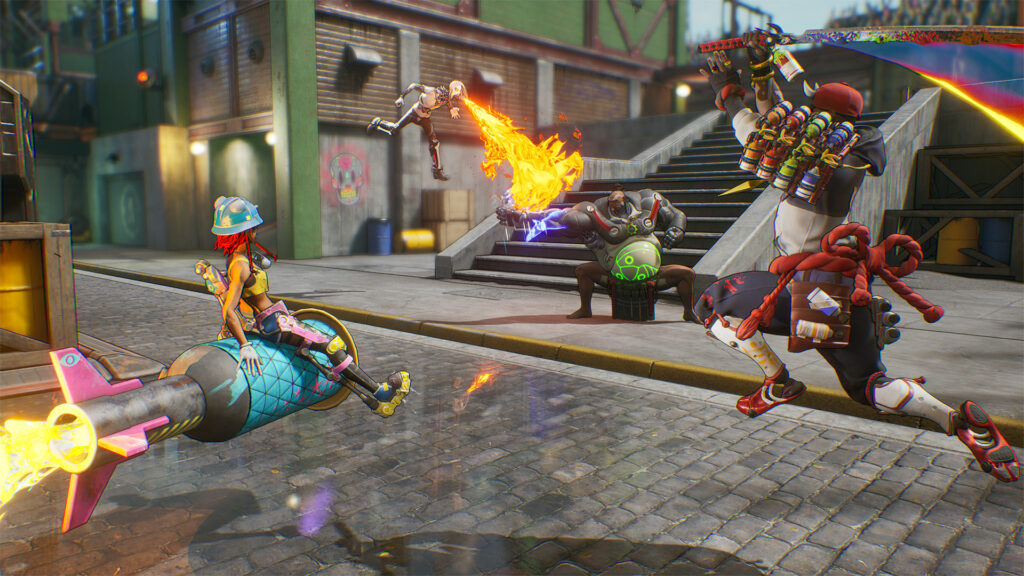
Ninja Theory are best known for their single player games, most notably DmC: Devil May Cry, Enslaved: Odyssey to the West, and Hellblade: Senua’s Sacrifice.
That last title earned the company some fairly widespread critical acclaim due to its story, so it’s perhaps a little perplexing that their next game, Bleeding Edge, is a multiplayer-only hero brawler.
While it’s perhaps commendable that they took a step out of their comfort zone, Ninja Theory’s inexperience with multiplayer games is extremely apparent in nearly every aspect of Bleeding Edge‘s feature set.
Bleeding Edge
Developer: Ninja Theory
Publisher: Microsoft
Platforms: Windows PC (Reviewed), Xbox One
Release Date: March 24th, 2020
Players: 8
Price: $29.99
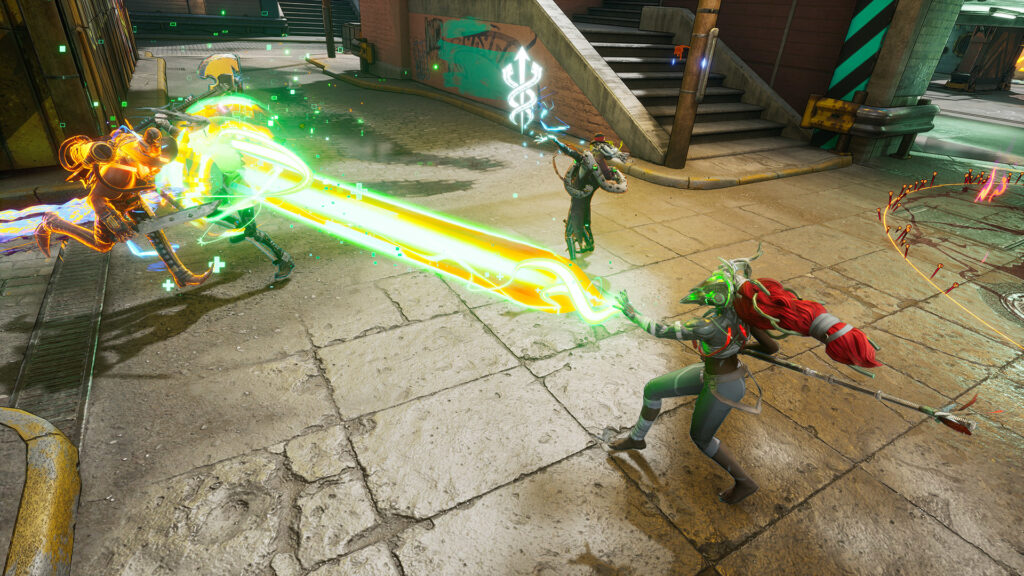
Bleeding Edge is set in a near-future world where mechanical body enhancements are commonplace. A secretive group of superpowered outcasts have emerged and joined together to form Bleeding Edge, an illegal underground fighting tournament designed to push their abilities to the limit.
Aside from character bios and pre-game voice chatter, that is about as much story as you are going to get from Bleeding Edge. As with most “hero shooters,” the story and lore are largely an afterthought, and serve mostly as a loose backdrop for the game’s competitive 4v4 arena brawls.
There was quite a lot of snickering about Bleeding Edge‘s character designs when the game was first announced, with a lot of the mockery being directed at Buttercup in particular.
This pink-haired mukbang monstrosity that rides around on a supped-up unicycle was interpreted by many as a sign of the game’s “woke” agenda. Personally I’m far more offended that she is supposed to be Cajun, but her personality and voice quips are basically just generic redneck chatter about buttering her biscuits, and eating her like a sandwich.
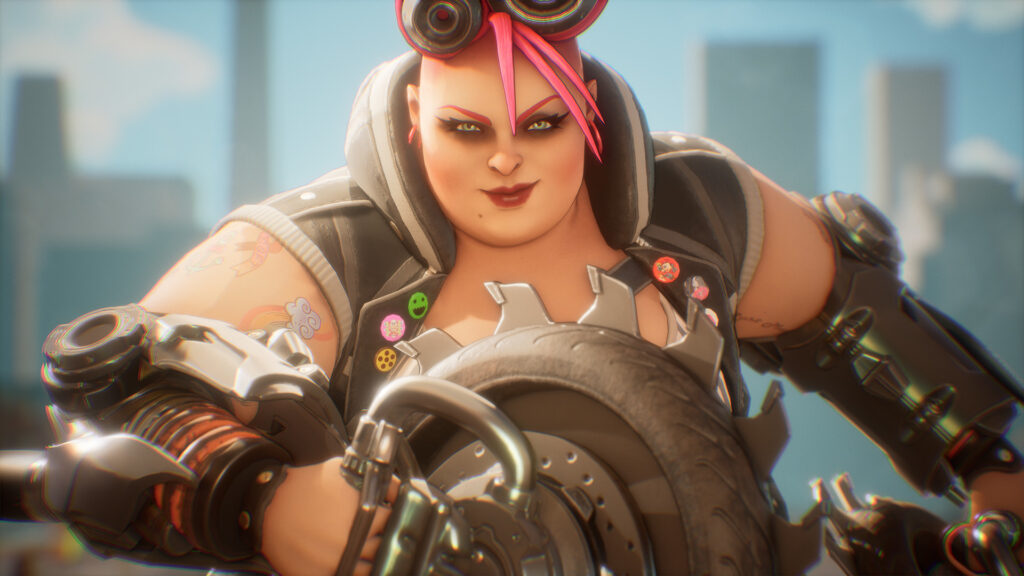
I’ll admit that I was one of the people laughing at the game’s goofy and generally unappealing character designs. Buttercup, as unappealing as some people may find her, is at least somewhat coherent. Some of the other characters are just so busy you can adequately describe them as “Dumpster Diver D.Va.”
That said, there are a handful of them that grew on me. My favorite is probably Kulev, a voodoo sorcerer that had his consciousness transferred to a robot snake, that now rides around the zombified remains of his human form. A lot of people seem to like him, mainly because he is the closest thing to a “normal” character design Bleeding Edge has to offer.
Miko, a South African shaman, and Makutu, a Polynesian Islander with a giant robotic body, also grew on me the longer I played. Both of these characters are also relatively tame compared to some of the more bizarre designs the game has to offer.
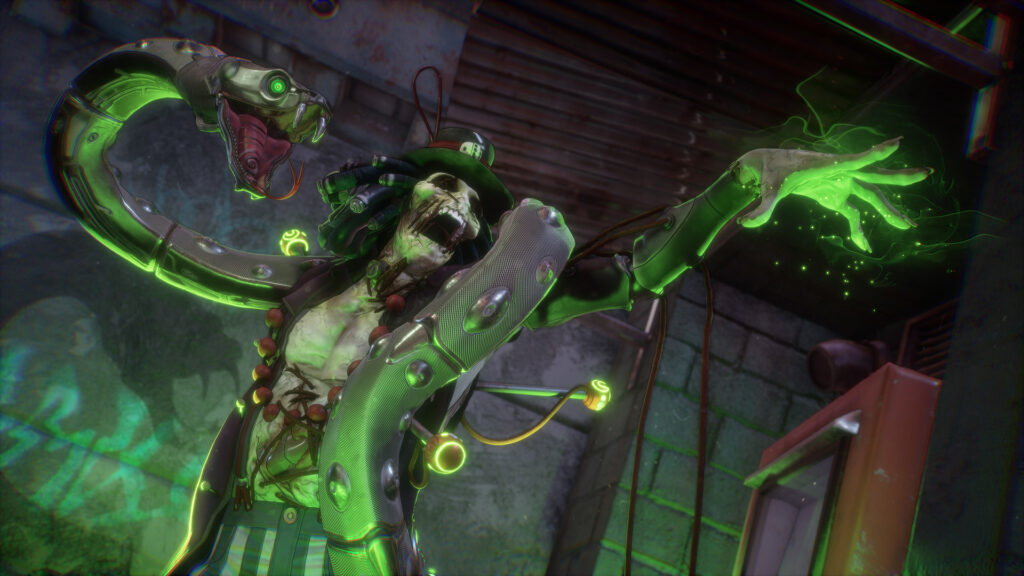
In terms of the actual gameplay, Bleeding Edge is an objective-focused, 4v4 team-based hero brawler. I say “brawler” and not “shooter” because many of the characters are melee-focused.
The ranged characters in the game all use an auto-targeting system, so traditional shooter skills (like aiming), don’t really come into play. There are no headshots, and the best ways to avoid ranged attacks are to break line-of-sight, or simply get out of their max range.
The melee characters tend to have a basic combo attack. You can also parry attacks, and the vast majority of characters have a cooldown-based dodge. Some might have a unique jump or movement-based ability, like ZeroCool’s thrusters, or Cass’s high jump.
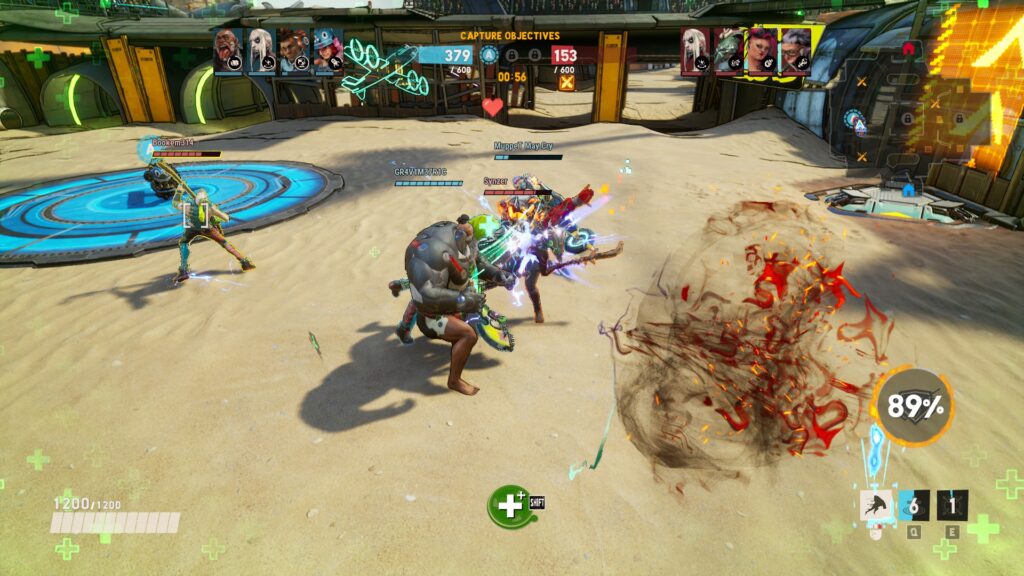
Each character has three cooldown-based special abilities, as well as an ultimate that gradually charges as you deal damage. You can pick from one of two ultimate attacks when you select your character.
Because the game is so focused on auto-targeting, Bleeding Edge has a relatively low barrier to entry in terms of complexity and skill. Instead, the game’s battles are more focused on teamwork, positioning, and managing your special abilities so you don’t waste them.
While getting kills and winning team fights is all well and good, in Bleeding Edge scoring objectives is the most efficient way to win games.
The game currently has two modes, one capturing and holding points on a map, while the other is about collecting batteries and returning them to a zone. The objectives rotate during a match, ensuring that you can’t just camp an area all game once your team has the upper hand.
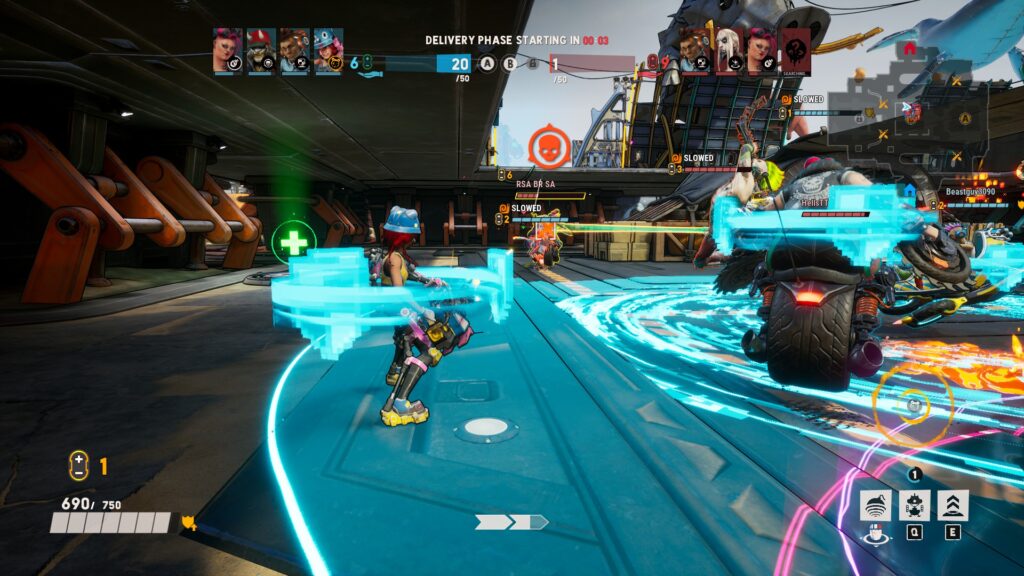
While Bleeding Edge‘s core mechanics are fairly simple, I actually found the game a lot more fun than I thought it would be. The characters might be fairly unorthodox in their design, but their skills and playstyle are a nice blend of familiar MOBA and hero shooter tropes.
Perhaps a little too familiar, as some of the characters come off as Overwatch or Dota 2 fan creations. I’ll just point to how ZeroCool is a Brazilian DJ that has an ultimate that shields nearby allies, or how Buttercup is a morbidly obese frontline tank that has a chain drag.
Despite the auto-targeting, its still possible to dodge or miss skills. Landing a perfect stun at the right time is as satisfying as it is in most games in the genre. Hero action games always run the risk of having animations and colors that are so overwhelming that its hard to tell what is going on, with Battleborn being a good example of this.
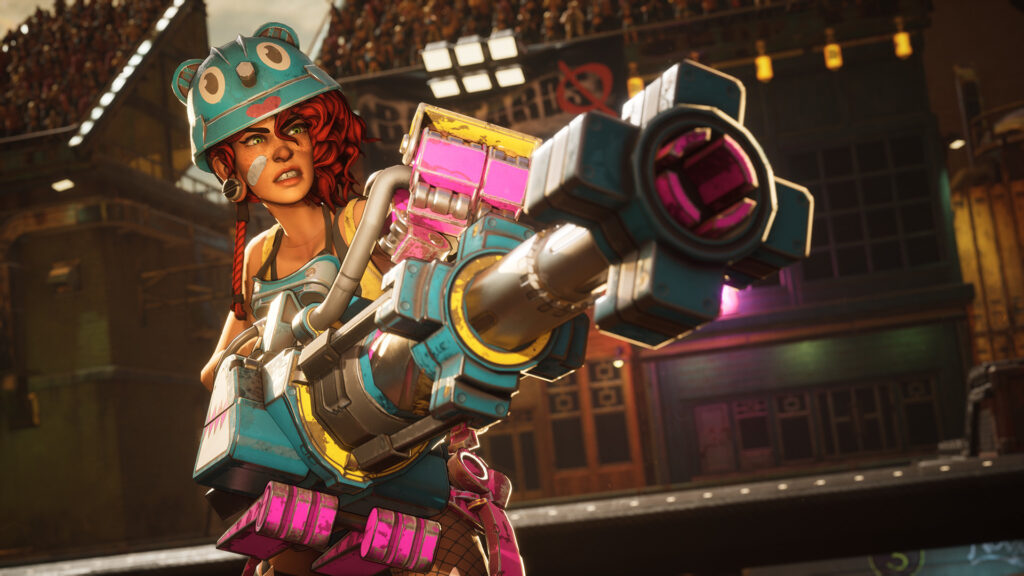
As bizarre as it might sound, given the game’s more crazy and busy character designs, Bleeding Edge manages to strike a good balance in this area. The combat and special skills are flashy, but not so over-the-top that they get distracting.
The maps themselves are visually quite varied, and fairly well-designed overall. All of them have an element of verticality, with catwalks and other upper levels that can be exploited.
They also all have hazards and gimmicks that usually come into play when its time to score objectives. One map has several objectives perched on a railway, forcing you to dodge high-speed trains. Another one has airstrikes that will bombard the objective zones.
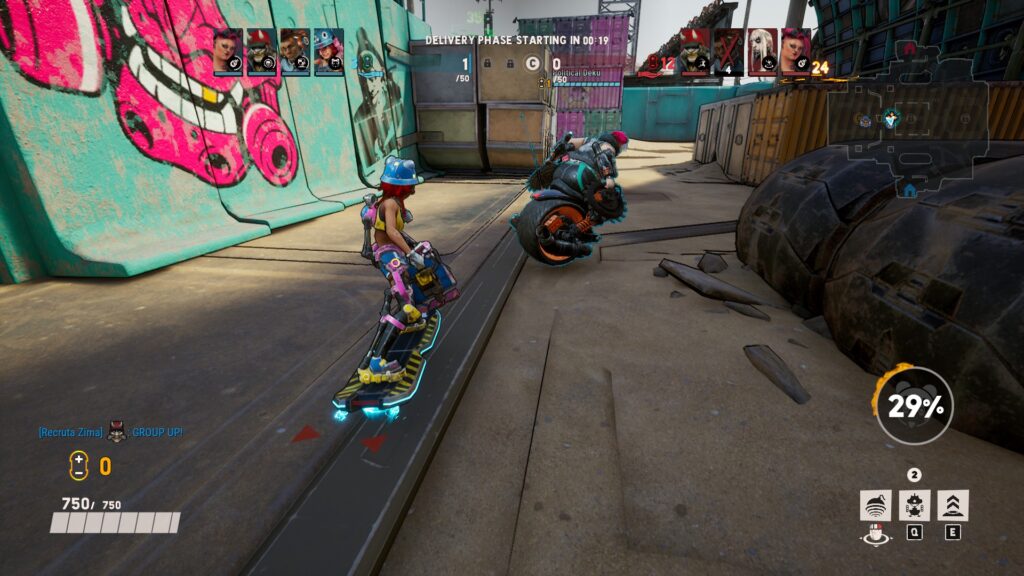
The game takes a cue from Paladins and lets you mount up to more quickly traverse the levels. Most players ride customizable hoverboards, though the ones that can’t really ride a hoverboard, like Buttercup and ZeroCool, have alternate configurations to help them move around the map faster.
Since Bleeding Edge is a team-focused game, the quality of your comrades can make or break a match. The game comes with plenty of tools to coordinate, but unfortunately you’ll just have to deal with poor teammates ruining a game from time to time.
Leavers are a problem that currently plagues the game, mostly because there really isn’t a penalty besides being put in a low priority queue for a few matches.
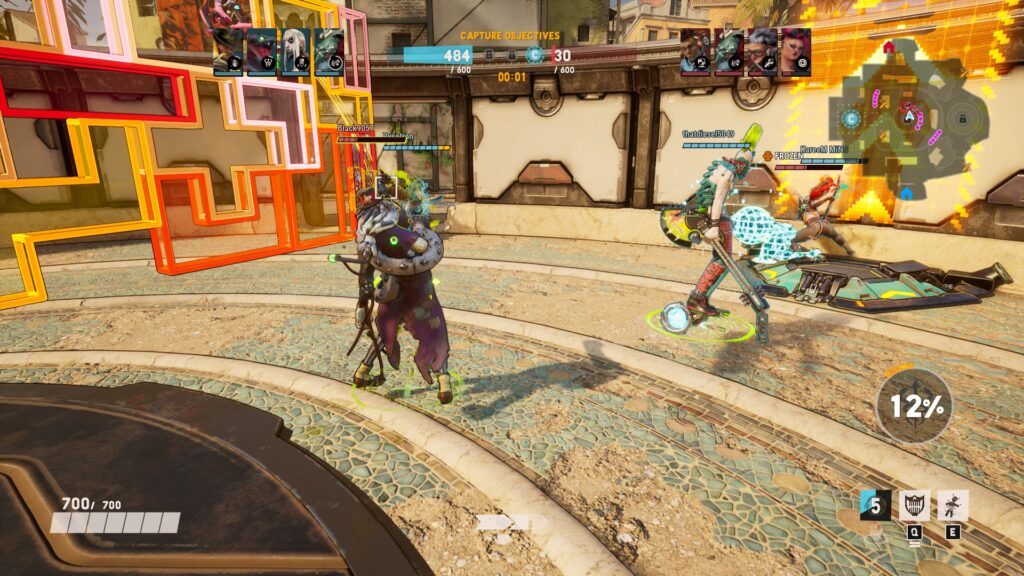
When a player leaves it can often take a solid three or four minutes before the matchmaking system finds a replacement. Bleeding Edge‘s matches are pretty quick and can snowball really fast, so a person leaving early can often put you so far behind that there really isn’t much you can do to turn the tides.
While the core gameplay of Bleeding Edge is pretty fun, the game suffers from a severe lack of content. As I said previously, there are currently only 11 characters, 5 maps, and 2 game modes.
That is the least of the game’s content worries, as it becomes extremely obvious that Ninja Theory just didn’t think about the most basic multiplayer features when designing the game.
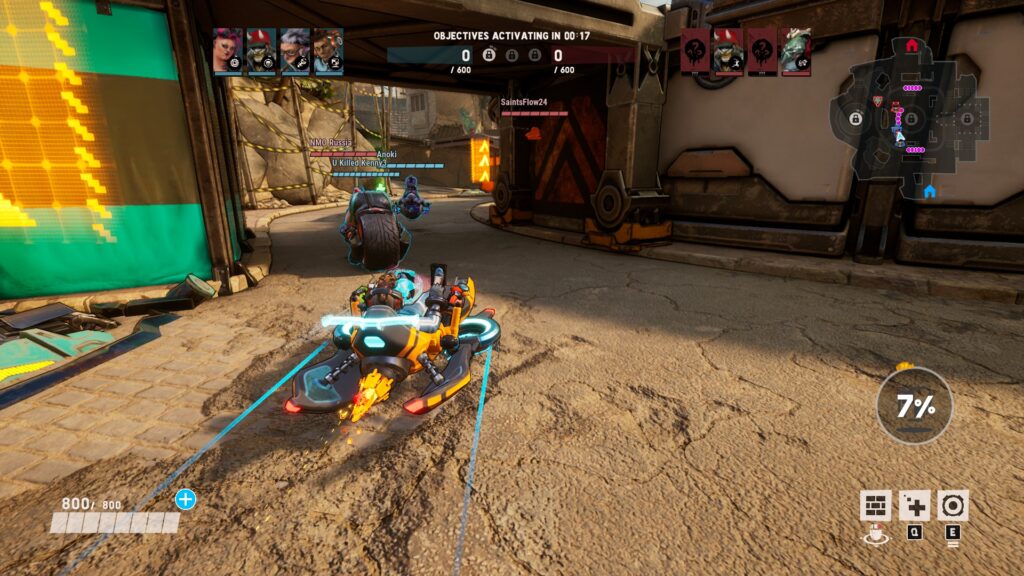
Bleeding Edge launched with no dedicated servers, no MMR, no lobby system, and no sort of ranked play. When a match is over, you can’t just queue up for another game. You have to go back to the main menu and queue up from there.
The lack of any sort of regional servers or real matchmaking means that you’ll be thrown in with just about anyone. Are you a fresh-faced newbie in New York? I hope you don’t mind being matched with a South African that has played for 100 hours, because such situations are entirely possible.
This, combined with the peer-to-peer networking, can lead to some serious lag at times. On the bright side, such situations have been relatively rare for me. It’s not too often that I get a really laggy match, but it does happen.
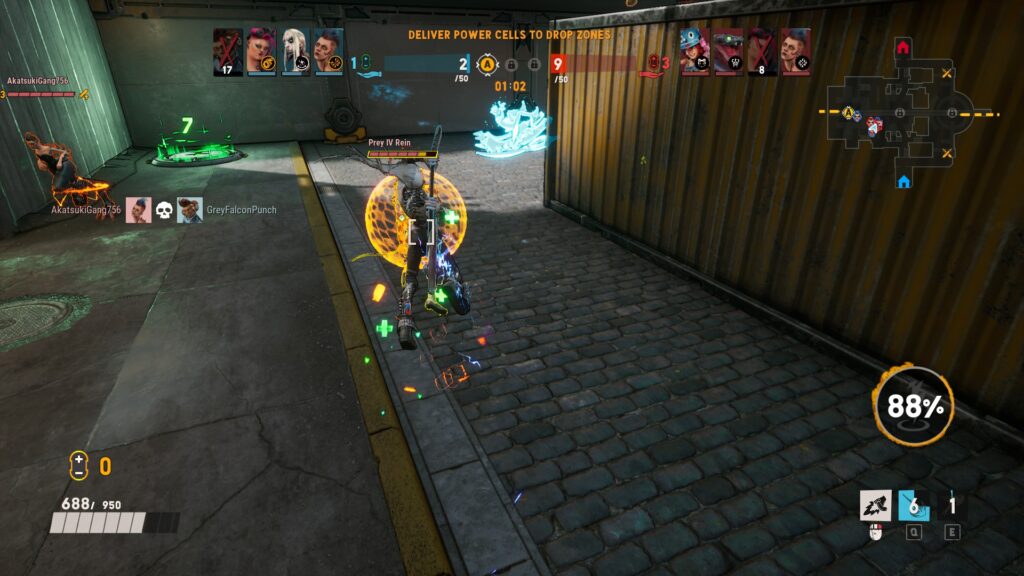
The game also uses Xbox’s servers, which in turn means that you need a Microsoft account to play. On the bright side, the game has cross-play, so Xbox One and PC gamers can play together. Since this isn’t a traditional shooter that also means that mouse and keyboard users won’t have a significant advantage either.
Bleeding Edge definitely needs the help from cross-play too, because the game already looks like its hemorrhaging players, assuming those players even existed in the first place.
The Steam numbers have consistently been in the 300s or less according to the Community tab, before the counter mysteriously disappeared. If it wasn’t for the fact that Bleeding Edge is on Game Pass, I doubt many people would be playing at all.
While lag can be a problem at times, Bleeding Edge is actually pretty solid from a performance standpoint. It stays at a fairly consistent 60 FPS, even in full team fights. That said, the game is hard capped at 60.
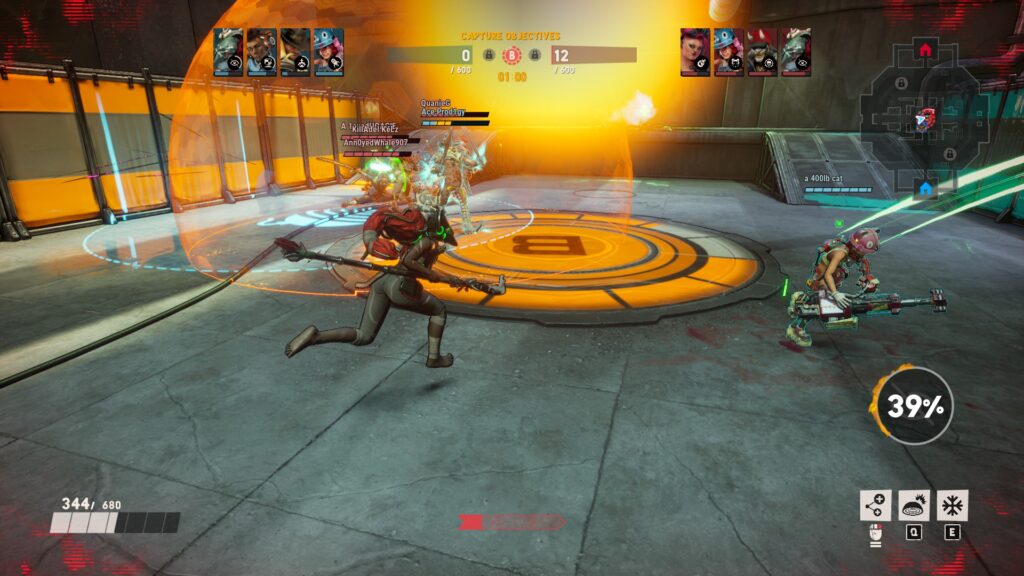
From a progression standpoint, Bleeding Edge is just as sparse as it is when it comes to gameplay features. The game doesn’t have loot boxes, which is a stunning display of restraint from the industry in 2020. There is also no way to buy the two in-game currencies so far. That earns Ninja Theory a tiny amount of goodwill from me, because it would be so easy to monetize a game like this in those ways.
The more meaningful half of the game’s progression system are mods. Much like in Paladins, you can create loadouts that tweak your favorite character’s performance. Each loadout consists of three mods, and each character has around a dozen of them at their disposal.
Some of the mods are generic upgrades, like extra health. Most of them are tied to one of the character’s skills, and change up the way you play that character. For example, you could double down on Miko’s healing skills, or take mods that make her better at singling out enemies by buffing her freeze bolt.
You get a random mod every time you rank up your account, and when you level up a character, you’ll get a random mod for them. You also get currency that can be used to purchase mods, and can dismantle unwanted mods to acquire more of that currency.
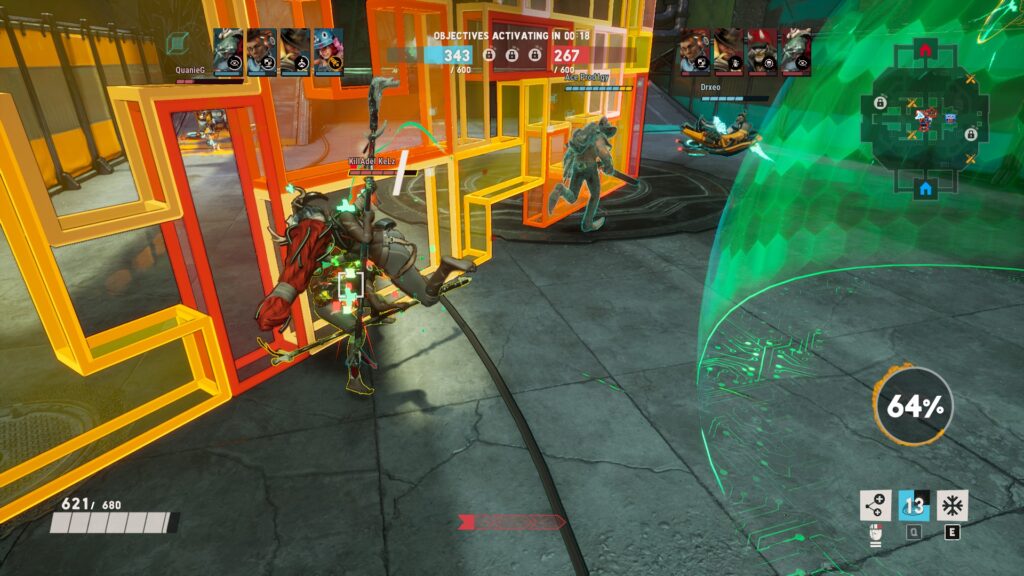
Besides mods, Bleeding Edge has the usual array of cosmetics you’d expect from a hero-based multiplayer game. Unfortunately, Bleeding Edge is far behind its competitors in this department as well.
Each character only has two alternate skins, and they are little more than the crappy recolors that Overwatch gives you for free. There are only three emotes per character as well. You can buy new hoverboards and exhaust trails, but that’s basically it as far as cosmetics.
I must admit that I went into Bleeding Edge with very low expectations. It has generally unappealing characters, and it came off as yet another “me too!” hero shooter chasing after the Overwatch bandwagon about two years too late.
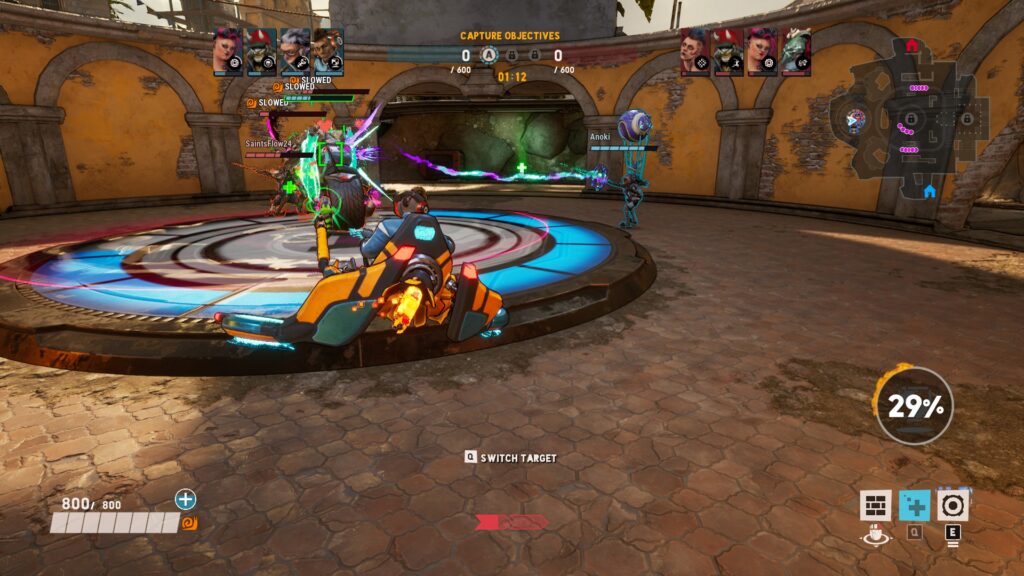
Instead, I was actually surprised to find the foundations of a moderately enjoyable game in Bleeding Edge. Once you’ve found the heroes you like, and manage to get a halfway decent team, then you can have some pretty fun gameplay sessions. It doesn’t do anything we haven’t seen before in the genre, but its fairly competent at what it does.
However, the complete lack of even basic multiplayer features makes it hard to recommend an actual purchase. When you get right down to it, Bleeding Edge is just way too barebones at launch, even for a “budget-priced” $30 game.
Even if you like the character designs or core gameplay, there just isn’t enough in the game to keep most people playing long term. You can already see this from the Steam numbers. I suspect that Bleeding Edge will soon become 2020’s LawBreakers, Gigantic, or Battleborn at this rate.
Some Images: Steam
Bleeding Edge was reviewed on Windows PC using a personal copy. You can find additional information about Niche Gamer’s review/ethics policy here.